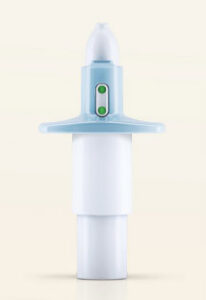Inattentive ADHD In Women: Five Facts To Highlight

When most people think of Attention-Deficit/Hyperactivity Disorder (ADHD), they might imagine a hyperactive child who can’t sit still. However, ADHD in women, especially the inattentive type, often presents differently than it does in men or younger individuals. This can lead to misunderstandings, misdiagnoses, and missed opportunities for intervention and support. By deepening our understanding of inattentive ADHD in women, we can better serve this population and offer them the care they rightfully deserve.
Subtle but Significant Symptoms
Unlike the more recognizable hyperactive symptoms of ADHD, the inattentive type in women often manifests as internal restlessness rather than overt physical hyperactivity. Women might experience difficulty in focusing on tasks, tend to daydream, misplace things frequently, or become easily distracted by external stimuli. Because these symptoms can be more internal and less disruptive in a classroom or work setting, they often go unnoticed or are mistaken for carelessness or lack of motivation.
Hormones Play a Role
Hormonal fluctuations across a woman’s lifespan can influence ADHD symptoms. Estrogen, in particular, affects the regulation of mood, attention, and impulse control. During periods of significant hormonal shifts, such as menstruation, pregnancy, or menopause, women with ADHD might experience exacerbated symptoms. Recognizing the interplay between hormonal changes and ADHD can lead to more effective and personalized treatment strategies.
High Risk of Coexisting Conditions
Women with inattentive ADHD often have coexisting mental health conditions. Anxiety, depression, and eating disorders are more prevalent among women with ADHD compared to those without the condition. This overlap can sometimes obscure the underlying ADHD, leading to treatments that might not address the root cause of their struggles. It becomes essential for psychiatric services to adopt a comprehensive assessment approach to ensure that ADHD doesn’t remain hidden beneath other conditions.
The Mask of Compensatory Strategies
To cope with their symptoms, many women with inattentive ADHD develop compensatory strategies. They might become excessively organized, relying heavily on lists and reminders. Others might work twice as hard to maintain average performance at work or school. While these strategies can be effective in managing day-to-day responsibilities, they can also be mentally and emotionally draining. Over time, this can lead to burnout and heightened feelings of inadequacy or self-doubt, especially when their efforts are still met with challenges.
Diagnosis Often Occurs Later in Life
Due to the subtlety of symptoms and societal expectations placed on women, many women with ADHD go undiagnosed until adulthood. They might have spent their childhood and adolescence feeling out of place or struggling in silence, not understanding the root of their challenges. Adult diagnosis can bring relief, as it provides a framework to understand past struggles. However, it also underscores the importance of raising awareness about ADHD in women, ensuring earlier interventions and support.
Looking Beyond the Surface: Recognizing ADHD in Women
ADHD in women is a multi-faceted issue, influenced by biology, society, and individual experiences. As awareness grows and psychiatric services evolve, it’s crucial to recognize the unique ways in which ADHD presents in women. By doing so, we can provide timely, effective, and empathetic care, ensuring every woman with ADHD feels understood, supported, and empowered in her journey.

